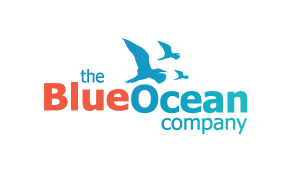“We need to develop agile and resourceful leaders who will be able to make decisions and take action in complex, rapidly changing conditions. What do we need to focus on?”
– HR Business Partner, Global Chemicals Manufacturer
Leaders versus Followers
Research reveals that not everyone is cut out to be an agile leader. There are those who have a natural tendency to handle uncertain and complex situations with confidence. These leaders exhibit a forward-looking “front of the boat” type of agility and “are” the change.
On the other extreme, there are those who are better at a reactive “fast followers” type of agility, leaders who are able to quickly align themselves behind the vision and “do” change.
When designing any initiative to develop and enhance agile leadership skills, a tailored approach is critical in order to tap into the inherent strengths of these different individuals.
Courage underpins agile leadership
Agile leadership can and should be developed and there are leaders who may resist an agile leadership approach. Fear of failure and micromanagement behaviour become the drivers, perhaps due to a traditional mindset and/or working to a hierarchical leadership model.
And so, courage becomes an underpinning competence of agile leadership. Of course, the emotionally intelligent behaviours including integrity, honesty, humility, communication skill, influencing, building teams and collaboration are key behaviours. But leaders will not display these behaviours if they don’t have courage.
Courageous behaviour is a habit that can be learned and developed. Courageous people take action, are resilient, will take considered risks and commit to performance outcomes.
Getting practical
According to an Oliver Wyman research study, there are also three variables that have statistically significant impact on increasing agility capabilities:
- Mental Clarity (Head): the ability to accurately discern when and how environmental conditions are shifting;
- Relational Connectivity (Heart): the ability to seek out connections with others;
- Commitment to Action (Guts): the ability to take action in spite of incomplete information.
Here are three examples of two-day action-learning workshops designed by the Blue Ocean Company that can be fully customised for in-company groups.
You will find these and more workshop designs in our extensive document Leadership By Design, which you can download for free.
Mental Clarity: Learning How To Stay Resilient and Resourceful
1.1 (Developing Agility and Adaptability)
Sometimes leaders may feel overwhelmed by things that are out of their control such as the economic situation, their corporate culture, or the speed at which their competitors are invading market share. By managing their motivation and mindset, leaders can stay resilient and resourceful, and become the drivers of a distinct performance environment that will enable the organization to adapt, innovate and ultimately win competitive advantage.
- Become conscious of and tap into your personal ‘resourceful state’ in order to deal with the complexities of modern business more effectively;
- Learn how to access self-belief when the pressure is on and pro-actively manage memory, past experiences and mental self-talk;
- Discover how to influence the outcome of most events by managing your own emotional response and respond quickly to change.
Relational Connectivity: Leading Change for High Performance Results
3.1 (Leading in Times of Change)
21st century business results are achieved by organisations that continually change, adapt and review. So the only constant is change. Leaders must understand how to plan for change, lead change, push for change and pull or change. They must be savvy about the principles to and the success factors of managing change projects.
- Learn to systematically prepare, initiate, implement and anchor change initiatives;
- Be capable of anticipating the emotional impact of change and handling the reactions of the people concerned;
- Become acquainted with a toolbox of practical methods that can directly be applied in your own area of responsibility.
Commitment to Action: Solution-focused Decision-making
3.5 (Being Resourceful & Innovative)
Most of us are capable of being more solution-focused and innovative than we think. But many of us have been taught to be cautious, afraid to make mistakes. Leaders and their teams need to rekindle their ability to see opportunities where there were none before.
- Make the shift from problem analysis to a solution-focused, strength-based approach that will help release new ideas and the energy to take action;
- Resolve dilemmas through a dynamic and non-linear process of “both/and”;
- Tap into your own and your team’s solution-focus potential and co-create a new path.
BACK TO ONLINE ADVICE ARCHIVE
